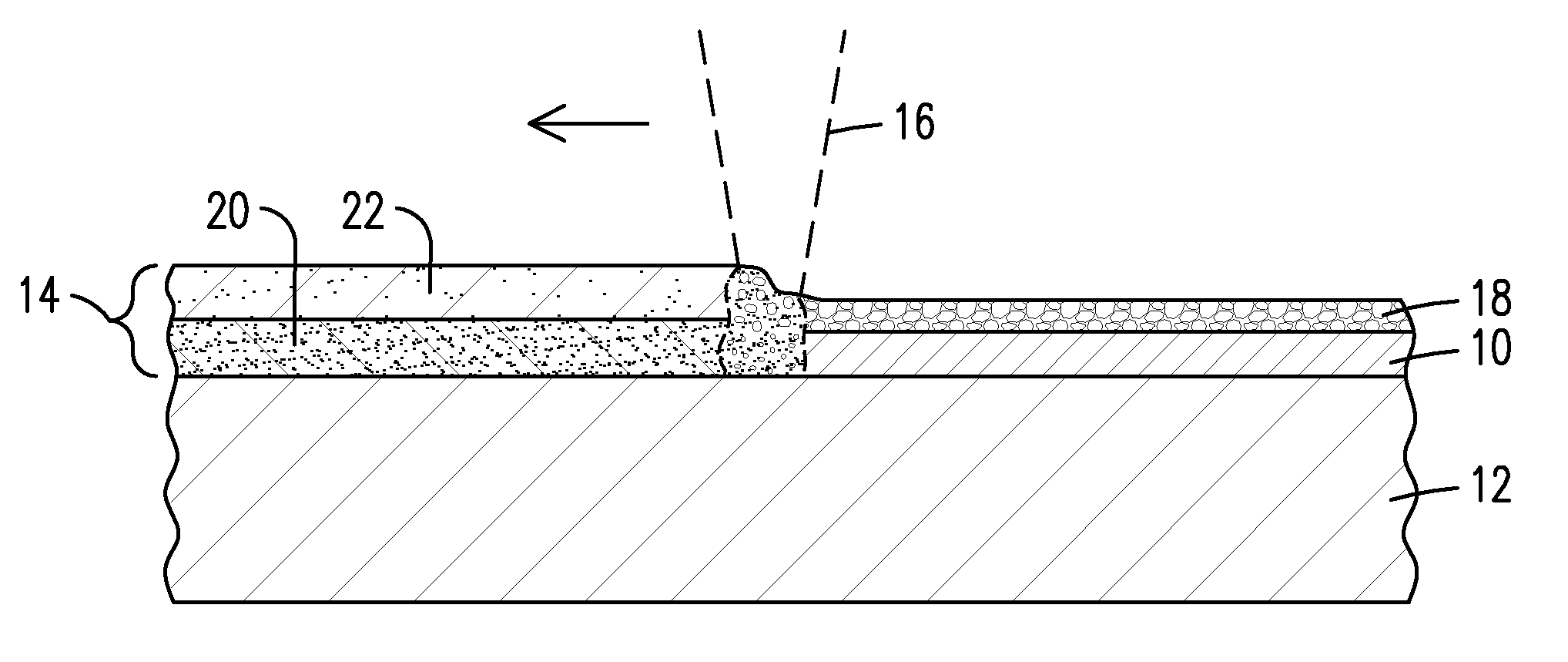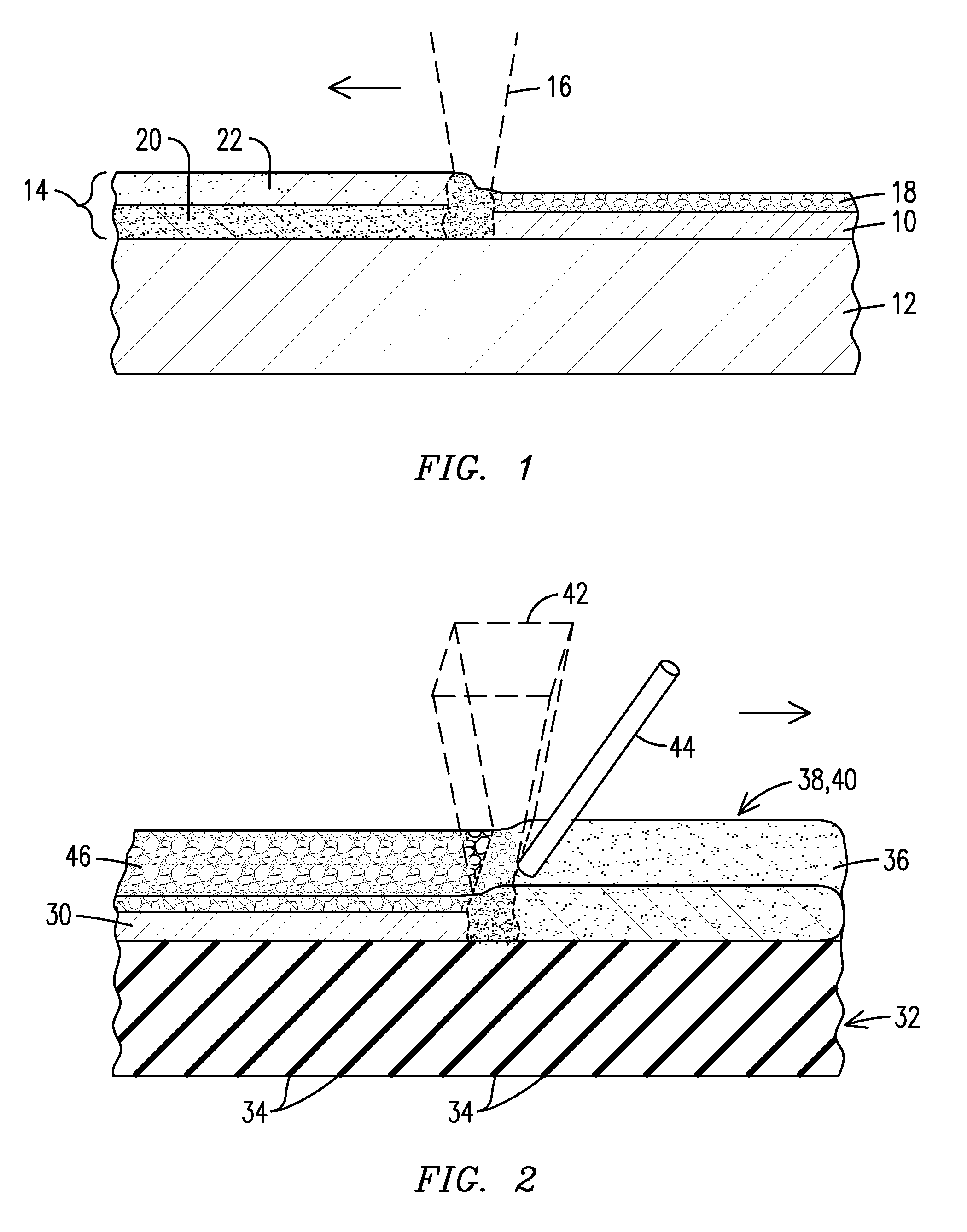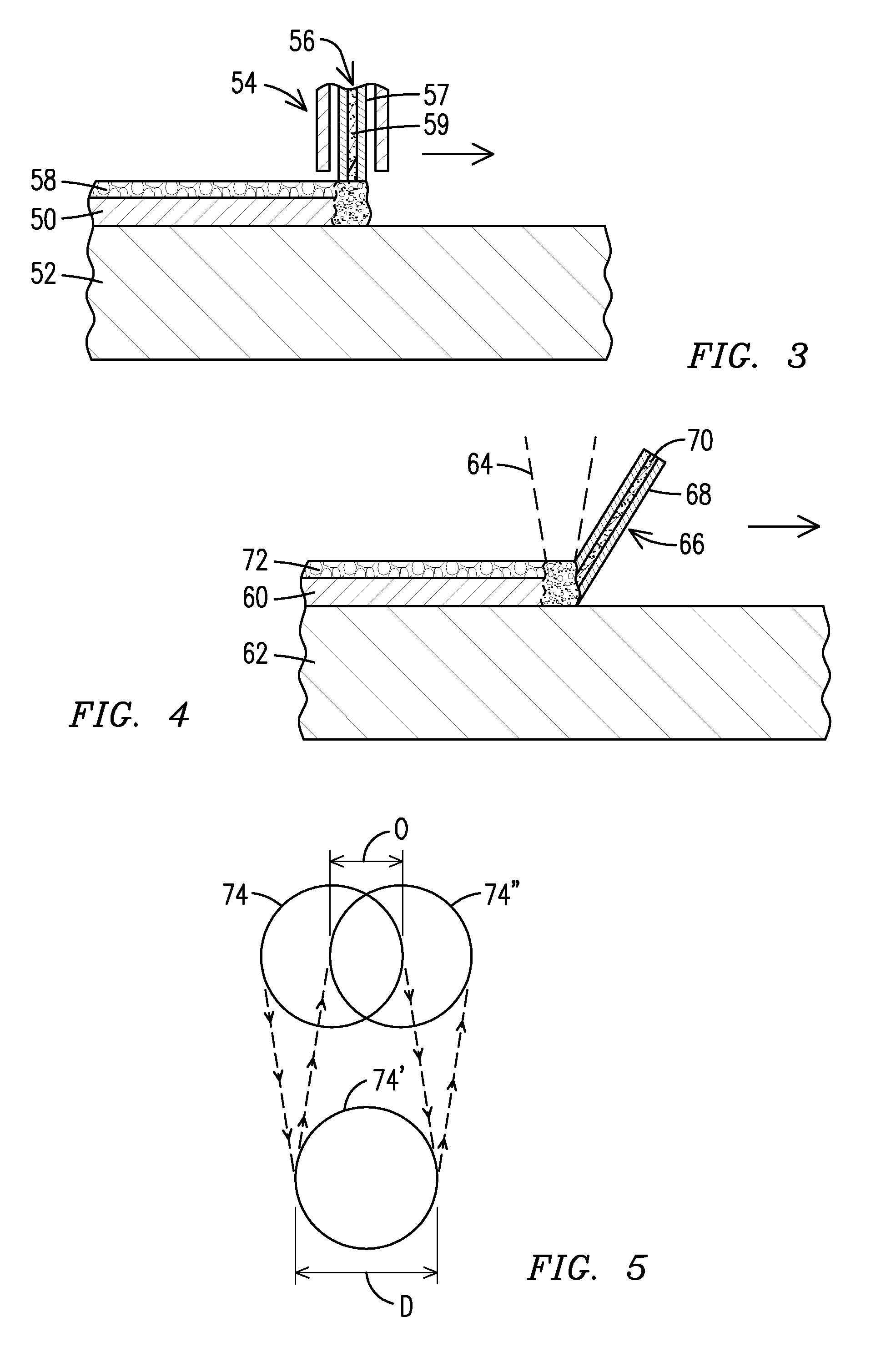Laser microcladding using powdered flux and metal
a technology of flux and powdered flux, applied in the field of metal joining, can solve the problems of limited hot box welding, inapplicability of many repair applications, and difficult welding of superalloy materials
- Summary
- Abstract
- Description
- Claims
- Application Information
AI Technical Summary
Benefits of technology
Problems solved by technology
Method used
Image
Examples
Embodiment Construction
[0021]It is noted for the convenience of the reader that FIGS. 1-5 herein illustrate various aspects and applications of the inventive technology described herein, and that the description of FIG. 7 below is particularly directed to the use of the inventive technology for laser microcladding applications.
[0022]The present inventors have developed a materials joining process that can be used successfully to clad the most difficult to weld superalloy materials. While flux materials have not previously been utilized when welding superalloy materials, embodiments of the inventive process advantageously apply a powdered flux material during a laser microcladding process. The powdered flux material is effective to provide beam energy trapping, impurity cleansing, atmospheric shielding, bead shaping, and cooling temperature control in order to accomplish crack-free joining of superalloy materials without the necessity for high temperature hot box welding or the use of a chill plate or the ...
PUM
| Property | Measurement | Unit |
|---|---|---|
| temperature | aaaaa | aaaaa |
| temperature | aaaaa | aaaaa |
| particle sizes | aaaaa | aaaaa |
Abstract
Description
Claims
Application Information
 Login to View More
Login to View More - R&D
- Intellectual Property
- Life Sciences
- Materials
- Tech Scout
- Unparalleled Data Quality
- Higher Quality Content
- 60% Fewer Hallucinations
Browse by: Latest US Patents, China's latest patents, Technical Efficacy Thesaurus, Application Domain, Technology Topic, Popular Technical Reports.
© 2025 PatSnap. All rights reserved.Legal|Privacy policy|Modern Slavery Act Transparency Statement|Sitemap|About US| Contact US: help@patsnap.com



